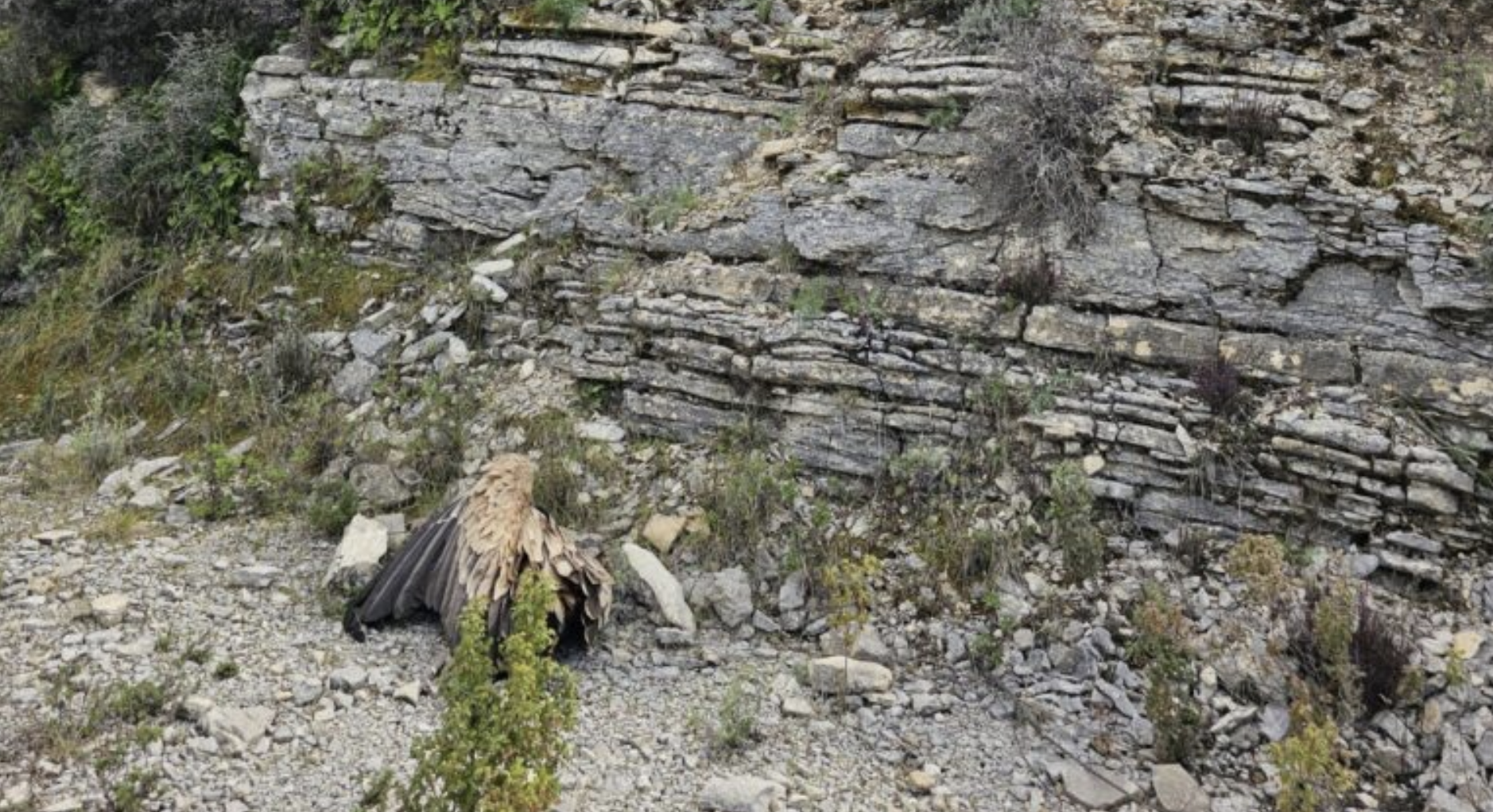
New evidence suggests two cases of a Rüppell’s Vulture breeding with a Griffon Vulture in Spain. In two different Griffon Vulture breeding colonies in Spain, one pair was observed copulating, and in the other, an adult Rüppell’s Vulture was collecting nesting material.
Rüppell’s Vulture
The Rüppell’s Vulture (Gyps rueppelli) is an African species whose distribution range is located in the equatorial and eastern areas of the continent. It resembles our Griffon Vulture (Gyps fulvus), especially the juveniles and immature birds, being slightly smaller in size. The IUCN’s Red List of Threatened Species considers it Critically Endangered, which is the last category before global extinction, due to the rapid declines of several populations across Africa.
Its declining state is mostly due to the successive and frequent mass poisonings in Africa, which are driving several species of African vultures to extinction. The Vulture Multi-species Action Plan (Vulture MsAP), co-developed by us here at the Vulture Conservation Foundation, and endorsed by the Convention for Migratory Species (CMS), concludes that poison is the biggest threat to vultures worldwide, and a significant part of this global action plan for vultures focuses on the actions needed to fight this threat. Unfortunately, experts foresee a rather bleak future in the short term if poisoning events keep occurring at this rate.
Rüppell’s Vulture in Europe

In consequence, Rüppell’s Vultures are becoming alarmingly scarce in Africa but, surprisingly, they are increasingly seen in Europe. This is probably due to increased mixings of individuals of this species with wintering juvenile Griffon Vultures in West Africa. A percentage of Europe’s growing population of Griffon Vultures winters in the Sahel zone of West Africa, where it will encounter some Rüppell’s Vultures. When European Griffons start their migration north, they probably drag some African vultures with them, and with plenty of food in Europe, they are beginning to call our continent home. The species was recently added to Andalucía’s list of vultures, making it Europe’s 5th vulture species and one of the most threatened bird species in Spain.
Ruppell’s Vulture breeding records in Europe
Exceptionally, an adult Rüppell’s Vulture remained at a Griffon Vulture breeding colony in southern Portugal between 1999 and 2007. Conservationist suspected that it attempted to breed, but there was no further information or confirmation regarding this assumption.
At the same time, in recent years, at least one vulture showing mixed features of both Rüppell’s and Griffon Vultures has been observed in Spain, further fuelling speculation that the two species hybridised in the wild, but again, nothing was proven.
Ruppell’s Vulture and Griffon Vulture breeding 2020
Now, with the 2019/20 Griffon Vulture breeding season already in motion, two different adult Rüppell’s Vultures have been regarded as showing breeding behaviour in Griffon Vulture colonies in Cádiz and Málaga respectively.
In Cádiz, a male Griffon and a female Rüppell’s Vulture were observed and filmed copulating in January 2020.
Meanwhile, in Malaga, an adult Rüppell’s Vulture who is resident in the area since 2017 was photographed repeatedly on 16 January 2020 carrying nesting material to different shelves of a cliff where other Griffon Vultures are already incubating.
In addition to the above, the observers notified us that both Rüppell’s Vultures are still around their colonies this week. But they could not determine, however, whether the vultures have laid a clutch or not.
While it is still early to determine the breeding and hybridisation success in the region, these new observations raise a fascinating insight into the species, whose conservation status is very critical.
Necessary to not disturb the vultures
The exact location of each breeding bird will remain confidential, and any developments of their breeding attempts will be reported to the local authorities. The observers who will continue to monitor the breeding progress used a public vulture observatory from a safe distance to ensure that the vultures were not disturbed.
This is indeed an exciting phenomenon, but the outcome also depends on our behaviour. As this is a very delicate period for breeding pairs, we kindly ask that you act responsibly and respect these areas and the vultures.
Special thanks go to Javi Elorriaga (Birding the Strait), Juan Ramírez (SEO-Málaga), Miguel González (Tumbabuey), Diego Herrera, Rafa Benjumea and Noel Hohental who provided this information and will continue to monitor this phenomenon and report it to the authorities.
Sign up to our newsletter and never miss any vulture news!





